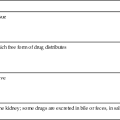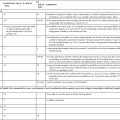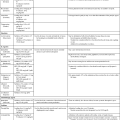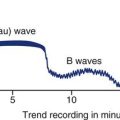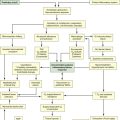Objectives
• Describe the needs and coping mechanisms of families of critically ill patients.
• Explain interventions and nursing management for patients with coping alterations.
![]()
Be sure to check out the bonus material, including free self-assessment exercises, on the Evolve web site at http://evolve.elsevier.com/Urden/priorities/.
Patients who require critical care must cope with a variety of stressors. A patient’s response to these stressors depends on individual differences, such as age, gender, social support, cultural background, medical diagnosis, current hospital course, and prognosis. A person’s perceptions of self and relationships with others, of spiritual values, and of self-competency in social roles also play a major role in how he or she responds to stress and illness. The purpose of this chapter is to provide a theoretical basis for understanding these various issues and to provide the nurse with additional insight into implementing holistic nursing care.
The selected diagnoses presented relate to the major concerns and problems that are common to the critical care setting. Customary responses to stress, such as anxiety, are described, as well as the risks for spiritual distress, powerlessness, hopelessness, and self-directed violence (suicide). Ways to enhance patient coping mechanisms and support family and friends with an attitude of care, openness, and warmth are presented. These interpersonal skills lead to effective interventions.
Effects of Stress on Mind-Body Interactions
Stress of any type—whether positive or negative, biological, psychological, or social—elicits the same physical responses.1 Extensive literature exists describing the relationship between mind-body interactions and the immune response to stress. All personal resources can be depleted by exposure to severe or prolonged stress. Several studies have shown the effects of life events such as an acute illness that is perceived to be a threat to personal integrity.2–4 The effects of an illness that requires hospitalization can be further compounded if admission to an intensive care unit (ICU) becomes necessary.
The ICU environment can be frightening. Technological equipment can control one’s breathing and prevent speaking. Invasive procedures, abrupt or continual noises, loss of privacy, sleep interruptions, pain, medications, isolation, and minimal contact with significant support people all create feelings of powerlessness and loss of control. Disorientation, which is common for patients in the ICU, is influenced by several factors, including the severity of the physical problem, chemical imbalances, sensory overload or deprivation, and previous experiences with the health care system. In addition to these factors are personal variables such as biological factors, social roles, and the individual’s emotional responses of anxiety, confusion, or depression.1–3 However, for some people, the ICU is perceived as a safe environment where life-saving procedures are immediately at hand and administered by highly competent caregivers.
Precipitating stressors may arise from the individual’s internal or external environment; adaptation may depend on the number of stressors and the timing of their occurrence, as well as the degree of change that is represented. See Box 4-1 for a listing of stressors in the critical care unit. The accumulation of daily hassles can often influence a person’s response to a major stressor. Personal characteristics that facilitate constructive adaptation to stress include hardiness, resilience, hope, a positive self-concept and internal locus of control, a sense of belonging, and the presence of social support.5–7 Use of maladaptive or destructive measures may temporarily minimize anxiety but do not resolve the personal conflicts. There are four stages of nursing activities: (1) stabilizing the patient in a time of crisis, (2) providing symptomatic relief and assessment of the patient’s coping responses, (3) reinforcing adaptive behaviors and improved patient functioning, and (4) implementing strategies for health promotion and optimal quality of life.
Anxiety as a Response to Stress
Anxiety is a normal subjective human response to a perceived or actual threat to self-integrity, which can range from a vague, generalized feeling of discomfort to a state of panic and loss of control. Anxiety is the most common of all mental illnesses.8 Symptoms of anxiety closely parallel the biological stress responses described earlier. The initial emotional responses of excitement and heightened awareness diminish as anxiety levels increase, the individual’s perceptual field narrows, and problem-solving and coping skills are lost. Prolonged stress can exhaust available resources.
Anxiety and Pain
A cyclic relationship exists between levels of anxiety and perceptions and tolerance of pain. This relationship varies according to whether pain is produced by disease processes or invasive procedures, is acute or chronic, or is anticipatory. Pain affects the whole person. It has been defined as “an unpleasant sensory and emotional experience associated with actual and potential damage, or described in terms of such damage.”9 Pain is also multidimensional in nature, necessitating comprehensive assessment and management. In conditions of high acuity, pain can be caused by a variety of factors, such as injured tissues, imposed immobility, intubation, lighting, noise, and interrupted sleep.
When an illness or pain is severe enough, the person experiencing it is forced to conserve all energies and focus inward to gain control of anxiety feelings. He or she may startle easily, become irritable, display anger and rage, be vigilant and wary of caregivers, or be demanding. There is a tendency to blame others, to be confused, and to be indecisive. The patient may withdraw from interpersonal contact and may indicate that the situation is overwhelming.8,10 It is crucial for the nurse to identify the cause of the patient’s pain, validate observations with the patient, and identify a plan for pain management. (For detailed information on pain management, see Chapter 8.)
Once pain management has been addressed, the nurse evaluates for ongoing anxiety. Again, the nurse needs to identify the cause of a patient’s anxiety and to validate observations with the patient. Medications frequently administered in the ICU can contribute to feelings of anxiety; they include theophylline, anticholinergics, dopamine, levodopa, salicylates, and steroids.8,9,11 Whether the causes of anxiety are biochemically induced, related to genetic factors, or secondary to a threat imposed in an emergency or a crisis situation, the nurse must take all factors into consideration for interventions to be effective. Panic attacks (outcomes of severe anxiety), which are frequent occurrences in the ICU, can also produce physiological symptoms such as tachycardia, hyperventilation, and dyspnea.10
Powerlessness
Powerlessness, as a nursing diagnosis, is defined as the perception of the individual that his or her own actions will not significantly affect an outcome.12 Unrelieved powerlessness may result in hopelessness, which is discussed in the next section.
The causes of powerlessness include factors in the health care environment, interpersonal interactions, cultural and religious beliefs, illness-related regimen, and a lifestyle of helplessness. The range in levels of powerlessness varies and depends on the person’s perceived sense of control, the amount of loss experienced, and the availability of social support. Powerlessness can be manifested by delayed decision making or refusal to make decisions or by expressions of self-doubt in role performance. Frustration, anger, and resentment over being dependent on others often occur and are exhibited as verbal expressions regarding dissatisfaction with care.13
Individuals vary in the amount of control they prefer.14 The routines of the critical care unit may oppose or preclude any control by the patient. The person for whom control is important should be helped to continue to control as many areas of his or her life as possible. On the other hand, a patient must be given the opportunity to choose not to control.
Critically ill patients generally have experienced a rapid onset of illness without having had time to acquire the illness role. If control is defined as the ability to determine the use of time, space, and resources, admission to a critical care unit strips away this power. On admission, persons lose their independent status. They become patients. Choice of clothing and use of other personal belongings are usually restricted in a critical care unit. Patients cannot decide who enters the room, who provides personal care, or who intrudes with painful treatments. Hospital rules are usually not open to modification. Patients may feel anxious because they are separated from a familiar environment and have restrictions on who may visit them.
Poor interactions with health care providers can make the situation worse. Patients may react aggressively, may try bargaining, or may refuse to comply with diagnostic and treatment regimens. They may resent the close scrutiny of the nurses and physicians and the invasion of their privacy. By virtue of their experiences with critical illness and care, people may lose sight of areas of influence they still do retain over themselves because so much control has been taken from them. Nurses can emphasize the patient’s influence or control and thereby help to preserve it.13,15
Hopelessness
Hopelessness is a subjective state in which an individual sees limited or no alternatives or personal choices available and is unable to mobilize energy on his or her own behalf.12 To help clarify hopelessness, the following definition of hope is included: a feeling that provides comfort while enduring life threats and personal challenges; a feeling that what is wanted will happen; a desire that is accompanied by anticipation or expectation. Most people agree that an element of hope must be maintained, no matter how hopeless things appear. Hope is a force that helps one survive.16,17 An interdisciplinary concept analysis of hope and hopelessness in the literature from theology, medicine, nursing, and psychology revealed that absolute hopelessness is viewed as incompatible with life. Hope often arises in the presence of crisis and instills vigorous resistance to giving up. The help of others in the situation supports the patient’s belief.5,15 Hope wards off despair, mental anguish, disorganization, and helplessness.17 When people expect something to happen, they usually act in ways that increase the likelihood that the expectation will be met.18 The expectation, whether positive or negative, becomes stronger the more times the “reinforcing circle” occurs. This process is defined as a self-fulfilling prophecy.
The critically ill patient is a multiproblem patient. Nurses and physicians are tempted to focus on the crisis and the use of technical equipment and to overlook the patient in his or her totality. The health care team may stereotype patients and underestimate their individual strengths.19,20 The very nature of the critical care unit is frightening and increases a patient’s sense of vulnerability and fear of death. Therefore, it is important to foster a realistic sense of hope in the patient.12,21 The critical care nurse can project an attitude of hope; identify some aspect of the situation in which hope is warranted, no matter how grave the situation; and attempt to channel feelings toward some positive outcome.
When the situation moves from hopeful to hopeless in the critical care unit, the decision to write a do-not-resuscitate order must be carefully considered.22,23 It must be recognized that members of the health care team and the family may reach this decision at varying times.24,25 However, it is important to not avoid difficult conversations and to keep patients and families informed. Careful medical and nursing assessments, use of family and team conferences to foster communication, and enlisting the assistance of a spiritual counselor can make these situations less frustrating for all concerned.
Families also need hope. Nursing strategies for supporting the family include clarifying any distorted thinking, providing opportunities for the family to be with the patient, presenting realistic patient outcome expectations, and expanding the coping repertoire of the family.22–24,26 See Box 4-2 for additional strategies.
Spiritual Distress
Spiritual distress has been defined as a disruption in the life principle that pervades a person’s entire being and that integrates and transcends one’s biological and psychosocial nature.12 Adherence to a particular philosophical, psychological, sociological, or political belief may provide a sense of one’s value and of life’s meaning. Threats imposed by any physiological or psychological illness or prolonged pain and suffering can challenge a person’s spirituality.27 Life-threatening illness causes a person to face his or her own mortality. The provision of holistic nursing care is not limited to meeting a patient’s religious needs; it also encompasses all that provides meaning to life.
An individual who is in spiritual distress may question the meaning of suffering and death in relation to his or her personal belief system. Anger toward God or a supreme being, feelings of self-blame, or regret over inability to practice belief rituals may be expressed. Individuals may even question the necessity for the therapeutic regimen. Spiritual care has been described as health-promoting interventions to relieve responses to stress that affect the spiritual perspectives of individuals or groups.12 Creating an environment of compassion in which patients feel that their emotional and spiritual needs are met is at the heart of holistic care.28 Listening to the patient’s concerns, offering support, and enlisting the support of a spiritual counselor can promote the healing process.
Major Depressive Episode
A major depressive episode is a mood disorder of at least two weeks’ duration that is characterized by depressed mood, diminished interest or pleasure in usual activities, insomnia, poor appetite, psychomotor retardation or agitation, and loss of energy. Patients with this disorder also may report feelings of hopelessness, worthlessness, and guilt. Recurrent thoughts of death, loss of interest in life, and recurrent suicidal ideation may be present.29 Major depression may complicate a patient’s underlying physical illnesses; for example, asthma, headaches, ulcers, arthritis, or coronary heart disease may be exacerbated to the point of a life-threatening situation.10,29 Depression deepens and suicide ideation frequently resurfaces after surgery if a life-threatening diagnosis is confirmed.
The nurse can listen empathetically and convey to the patient that recovery from the depression is expected, while understanding that the patient’s depression cannot be overcome by cheerfulness or reassurance. If the patient is on suicide precautions, the nurse safeguards the patient according to department policy and procedure and alerts all members of the health care team and the family. The nurse also informs the patient that precaution measures are being taken as a safeguard until his or her mood improves. Requesting a comprehensive mental health assessment by a mental health professional would provide the means for giving proper attention to the patient’s mind-body experience.
Suicide Attempt
Depression is a causal factor in 30% to 70% of suicide attempts among the high-risk groups of youth (ages 15 to 24 years), the elderly population (>65 years), and individuals with psychiatric disorders. Suicide has been described as a self-destructive response to a stimulus resulting from an undesirable, unacceptable, or overwhelming event; as a response to overcome high anxiety feelings about abandonment by God or significant others; as a hostility toward self; and as the only solution for ending a helpless or hopeless situation. Nurses in high acuity and emergency settings will be challenged by patients who have attempted suicide or are at risk for doing so. Persons with cognitive impairment resulting from delirium effects of medications, fluid and electrolyte imbalances, anoxia, surgery, or trauma are at greatest risk for attempting suicide. Hallucinations may compel their self-destructive behavior.30 A primary focus for care of the person with self-destructive behavior is protection from harm.10,30,31 Nurses also must consider their own responses to patients’ self-destructive behaviors, which can enhance or inhibit their interactions with patients. Interventions may include removal of harmful objects; consistent supervision; active listening; contracting with the individual to cease harmful activities; promoting the person’s self-esteem and self-control in regulating emotions and behaviors, which frequently includes administering anxiolytic medications and mobilizing social support systems; and providing mental health education.
Coping
Patients who require critical care must cope with a variety of stressors (Box 4-1). Each patient’s response to these stressors is unique and depends on a variety of environmental factors and individual differences. The nurse’s knowledge of assessment, diagnosis, and effective coping strategies also affects how well the patient copes. The uncomfortable effects of a situation (e.g., anxiety, grief, loss of control) can lessen the effectiveness of coping mechanisms when people are faced with serious problems that they cannot overcome using familiar behaviors.
Coping is a dynamic process involving cognitive and behavioral efforts to manage specific internal or external demands that are perceived to exceed the person’s resources.32,33 Aguilera34 states that coping activities encompass all the diverse behaviors that people use to meet actual or potential demands. The available coping mechanisms are those behaviors that a person draws on that have been found to be effective in the past. The key to effective coping is using the best strategy or mix of strategies in a given situation.
Coping Mechanisms
When a patient copes effectively, what he or she is doing to cope often goes unnoticed. Emotionally, the patient seems relatively comfortable, is a cooperative recipient of care, and exhibits nonproblematic behavior. The patient may be using multiple appropriate coping mechanisms that help to manage a problem or a stressful situation. The following discussion covers several coping mechanisms that may or may not be effective, depending on the degree to which they are used. Some authors differentiate between coping mechanisms that relate to adjusting, adapting, and successfully meeting a challenge and defense mechanisms that are automatic self-protective measures developed in response to an internal or external stressor.2,20,35 Examples of the latter include denial, acting-out behavior, avoidance, hypochondriasis, passive-aggressive behavior, and projection.
Suppression
Suppression is a conscious, intentional process in which patients push ideas, problems, or desires out of their conscious thoughts.35 Patients often use suppression when their problems are overwhelming and they are in no position to resolve them. For example, before becoming ill, an individual might have been struggling to meet financial obligations, but she or he now uses suppression to postpone dealing with this concern until further along in the recovery phase.
Denial
Patients may deny various aspects of their illness. Some deny the probable medical significance of symptoms, as in the case of the 55-year-old cardiologist who interprets severe substernal chest pain as indigestion or the quadriplegic who cheerfully insists that he will be back on his feet in no time. Other patients cannot recognize signs of illness that are obvious to others, as in the case of the patient who cannot “see” the gangrenous foot requiring amputation.36 Other people cannot readily influence the beliefs of a patient who is using denial. For example, the patient who is denying a myocardial infarction will not be convinced of its occurrence by being shown the cardiogram interpretation or laboratory reports. This patient is best served by a nurse who recognizes the patient’s need to deny at the present time but who watches for cues from the patient that indicate readiness to accept the reality of the medical diagnosis. A patient with a tracheostomy may refuse to look at her body, avoid mirrors, and fear rejection by others because of her appearance. Forcing her to look at herself before she is ready can be extremely detrimental.
Trust
Trust manifests itself in the critical care patient as a belief that the staff will get him or her through the illness, managing any untoward event that might occur. Trust is an unconscious process in which the patient transfers the trust learned in early significant relationships onto caregivers in the present.10,37 For example, a patient with severe burns must learn to trust caregivers. Intense fear of pain or of falling when being moved from a stretcher to a Hubbard tank can affect other coping skills as well.
Hope
Although hope has long been recognized as a significant factor in patient recovery and survival, the phenomenon receives little attention until the patient comes to feel hopeless. Hope is the expectation that a desire will be fulfilled. It can exist even in the face of a realistic appraisal of a grim situation.38 Hope supports the patient and helps the patient endure the physical and psychological insults that are a part of the daily experience. Hope is central to resilience and spiritual strength.39
Spiritual Beliefs and Practices
Spiritual beliefs and practices may provide the patient with some measure of acceptance of an illness, a sense of mastery and control, a source of hope and trust beyond the limits of what the staff can provide, and strength to endure the current stress. A patient may discuss personal beliefs and concerns openly or may view the subject as a private and personal matter.40–46
Use of Family Support
The patient can use the presence of a supportive family to cope with critical illness. The patient with a supportive family knows that family members share a past and hope for a future with the patient. Family members love the patient as a person and as a member of the family. The patient also realizes that family members know him or her in ways the staff cannot. With family, the patient may know that his or her experience is truly understood, even when little is said. Family members can be involved in the patient’s personal care and can attend to practical problems the patient cannot take care of, such as managing finances.47 Family members can help the nurse to understand and know the patient, especially patients who are unable to communicate.
Sharing Concerns
Sharing concerns with a caring and understanding listener can relieve some of the patient’s spiritual and emotional distress. The patient is consoled knowing that he or she is not alone and that someone knows and cares about what is being experienced (as mentioned earlier in the discussion of suicidal ideation).19,20,48 Although the patient may share concerns with family members, she or he may be reluctant to upset loved ones further or may have a family among whom such communication is not the norm. A patient who relies on this coping mechanism will benefit from a nurse who recognizes when the patient needs to talk and who knows how to listen.
Coping Assessment
Ineffective coping may be suggested by patient behaviors. Overt hostility, severe regression, or noncompliance with treatment may suggest ineffective coping. The patient may also report such problems as severe anxiety, despondence, or despair. The nurse who suspects that coping is ineffective should consider a number of factors before questioning the patient directly.20 It is not always clear whether the patient’s coping is truly ineffective or whether intervention by the nurse is indicated. Witnessing problematic behavior can be very uncomfortable, especially when that behavior is directed at the caregiver. Careful evaluation of one’s reaction to the behavior is needed to discover whether patient care can continue to be provided objectively by the nurse alone or whether consultation with others on the team is needed to alleviate the problem.13,19
Enhancing the Coping Process
Supporting the Patient
Attention to the total patient is an ultimate goal of nursing care. Nightingale believed that it was “unthinkable to consider sick humans as mere bodies who could be treated in isolation from their minds and spirits.”44 Essential techniques for effective interventions include an attitude of caring; openness and warmth; and withholding judgment until you know the patient (have an understanding of the individual’s self-perception), the current illness or problem, and the type of social support available. Assessment skills are essential, as is a willingness to become involved when the potential or actual use of ineffective coping mechanisms exists.
Teaching the patient new coping skills may be impossible, because individuals have a repertoire of conscious and unconscious defense and coping mechanisms that automatically come into play when they are facing a stressful situation. A person who is experiencing extreme psychological stress cannot learn new methods to manage these defense mechanisms. However, the nurse may help to reduce the level of anxiety by employing active listening, by encouraging support from family members and other caregivers, and by introducing changes in the environment as appropriate. In doing so, the nurse can facilitate the changes the patient must make. It is extremely important that the patient express an interest in learning and recognize a personal need for help.10,46
A patient’s trust in the nurse’s competence in the physical and technical aspects of care aids in the patient’s participation. Hope is instilled when the nurse and other caregivers display a sense of realistic optimism regarding the patient’s progress. It is essential that patients receive honest feedback, as patients are keen observers of their caregivers and read them well. Trust and hope are easily lessened when inappropriate information is given.
Supporting Family Members
Patient-centered care is also family-centered care. Consideration of nonbiological or nonlegal partners of the patient as members of the patient’s support system is also necessary in providing holistic care. The nurse’s support of family members at the bedside can enhance the value of the visits for the patient. Patients often look to the family for love, understanding, support, and for care of matters to which they cannot attend themselves. The nurse can observe the quality of the patient-family interaction and formulate interventions that will aid the family in supporting the patient.19,49,50
Illness of a family member can be a hardship on the whole family. The illness (or death) of a patient can affect the health of other family members—particularly an elderly spouse.22,47 Reactions to the stress are similar to the emotions experienced by the patient. The extended waiting time between visits with the patient, lack of information or misinterpretation of information, disruption in family roles and routines, being in an unfamiliar and challenging environment, and worry over outcomes, finances, and additional responsibilities can be overwhelming. Disorganization and emotional turmoil may result. Sleep deprivation is a frequent experience leading to confusion and inability to make decisions.
Family members also may react to the crisis with expressions of anger and hostility toward the patient or staff, or they may be immobilized.23,40 The family member may be at a loss for what to say or do during visits with the patient. The nurse might find some words to put the family member at ease and offer a suggestion for what to say to his or her loved one.
If the family member is so upset that he or she completely loses composure, a brief attempt at supporting this family member away from the bedside may be an adequate intervention. In doing so, the nurse may determine that the family member needs the assistance of a consistent outside source of support and therefore may consult with another member of the health care team, such as a psychiatric nurse consultant, pastor or chaplain, or social worker.
Communication between family members and the health care team is crucial, especially when patients are critically ill. Satisfaction and understanding the events and course of treatment in critical care by patients and their families are increasingly recognized as indicators of care quality for the critical care experiences.51 Family members have their own issues to deal with when their loved ones are critically ill. Oftentimes family members are overwhelmed, and may be at higher risk for depression, thus diminishing the support that they can offer to their loved one.52
Family members use a variety of coping mechanisms. Various factors impact how family members cope, including previous experience with critical care, uncertainty of treatment outcomes, suddenness of the critical event, and availability of support for themselves.53 Another population of patients often found in critical care or a progressive unit are those who have a chronic critical illness. This condition introduces a whole other phenomenon for family members to deal with while supporting their loved ones. The uncertainness and lack of stability with the patient who has a chronic yet critical illness can lead to anxiety, depression, and posttraumatic stress disorder. Therefore, there needs to be support and early and ongoing screening for symptoms of psychological distress in family members.54
Families often must deal with the impending death of a loved one when the patient’s condition deteriorates despite all efforts. Anticipatory grief is a process that is filled with emotional upheaval and can be as intense as when the loved one actually dies.55–57 At such times, family members are particularly sensitive to the nurse’s words and actions and may misinterpret them as signs of indifference. This may be particularly true for nontraditional family members. It is essential that the health care team conveys understanding and acceptance of the patient and his or her family. Some interventions that are meaningful to the family are reassurance that the patient is receiving adequate pain medication, telling the family what to expect as the dying process progresses, and helping them to comfort the patient with their presence. After the death, family members should be allowed to spend some time alone with the patient; be supportive of them as they work through their grief. Recognizing cultural and religious factors and incorporating them into the plan of care is also beneficial to the family.24,38
Supporting Spiritual Care
Spiritual needs assessment is often inadequate when patients are asked only about their religious affiliation. If no affiliation is mentioned, no further questions are asked of the patient regarding spiritual matters. Spirituality is a basic human phenomenon that helps create meaning in the world and can be experienced before any awareness of religious beliefs.39,58 Separation from philosophical and religious rituals and ties, together with intense suffering, can induce spiritual distress for patients and their families. Some individuals may question their very existence and may even display anger toward religious representatives. Others may view their illness as fate or just punishment and resist help, give up, and wait to die.59 Philosophical belief practices can directly affect caregiving practices such as diet, hygiene, and rituals surrounding birth, death, and medical interventions. The nurse should have a basic understanding of the various religious tenets of Eastern and Western philosophies and how they may affect a patient’s plan of care.10,43,44 Patients can easily succumb to feelings of helplessness and powerlessness in the technological, impersonalized environment of the ICU.
Including a pastor or chaplain on the health care team is also an important aspect of holistic care. The chaplain may be the best person to assess spiritual needs and to assist patients and their families in coping with the crisis. Providing access to religious rituals, prayer, scriptures, and readings is a meaningful strategy to help alleviate stress for patients and their families. The patient, with the help of the agency chaplain, pastor, or counselor, can identify inner resources of strength, meaning, and purpose to help cope with the crisis event. The spiritual leader is also valuable in ethical decisions such as termination of life support. Moreover, the spiritual advisor can be of great assistance to the health care team as their own personal resources are drained as a result of the sustained or cumulative assistance they have provided to others in crisis.44
Spiritual health has been found to be associated with hardiness, a composite measure composed of commitment, challenge, a sense of control, and a mark of psychological health.24,44,58 Spiritual well-being also can refer to one’s valuing of goodness, love, and relatedness to others or a general feeling of having a purposeful and fulfilled life.
Supporting Complementary Therapies
The field of complementary therapies is evolving. The purpose of these therapies and practices is to help maintain wellness and, when necessary, to facilitate the body’s own healing responses to restore balance and harmony. Integrative health care implies blending conventional health care with complementary therapies, accompanied by open communications among practitioners and conscious recognition of the possible synergy. Integrative health care, like nursing, holds a holistic philosophy.
Interest in complementary therapies has increased dramatically in the past decade, and the national demand for these services has reached unprecedented levels. Time trends have been examined, revealing that almost 70% of adults in the United States had used at least one complementary therapy in their lifetime.60 The number of hospitals providing complementary therapies is also growing. Nursing, in turn, is returning to those holistic roots with an increased awareness and integration of complementary therapies. Today, nursing combines biomedical understanding of disease and treatment with the caring behaviors and treatments that have been part of holistic nursing practice throughout history.61


